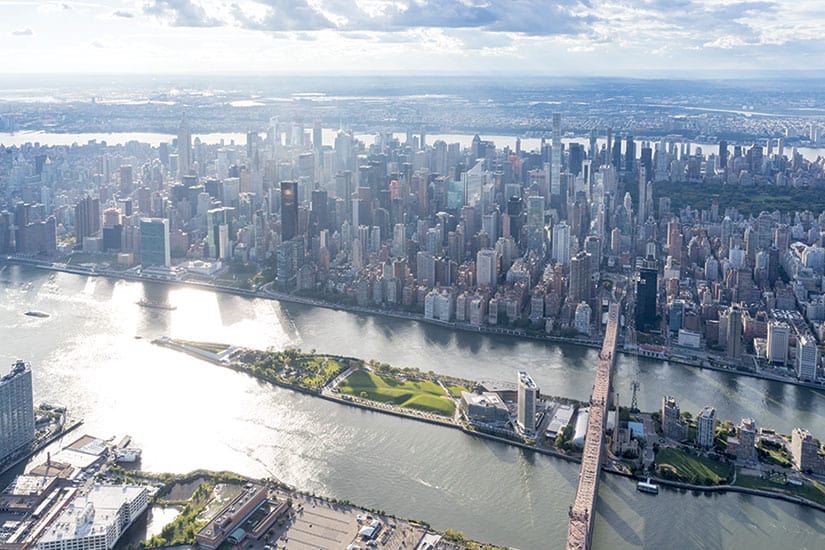Roosevelt Island gets an Architectural Boost from Cornell Tech
- May 15, 2018
- Posted by: Paul
- Category: Architects, General Construction, Uncategorized

The idea for what would eventually become Cornell Tech–that the brand new tech-focused graduate faculty on New York’s Roosevelt Island– have been born during the previous downturn. Former mayor Michael Bloomberg was supporting the drive to accelerate the increase of the town’s tech industry and make the economy less reliant on Wall Street and the financial-services sector.
This new institution that provides graduate-level degrees in areas like information science, electrical engineering, and connective media, and unites cutting-edge study and education together with entrepreneurship had, like 2012, were placed in Google’s construction in Manhattan. But today its 300 students and 30 faculty members possess a house of their own, together with three finished buildings: an academic construction from Morphosis Architects; a “co-location” center by Weiss/Manfredi Architects which offers space for cooperation between academia and business; along with a residential tower by Handel Architects. Finally, there may be over 2,000 students registered.
The Bloomberg administration began this demanding applied-sciences initiative in late 2010 by soliciting thoughts and expressions of interest from top universities, offering them the possibility of creating among many city-owned locations, a 99-year lease on the property, and $100 million in seed financing. Finally, the New York Economic Development Corporation granted the job to Cornell University and its associate, Technion-Israel Institute of Technology, along with their suggestion to Roosevelt Island. (Bloomberg’s charitable foundation would later contribute $100 million for its key academic building. The colleges take also increased over $770 million in other private resources.)
Having won the contest, they then confronted the actual challenge. The Cornell-Technion team needed to undertake the challenging work of creating a set of constructions and a campus to get a forward-looking program that wasn’t yet well defined, and one which would likely continue to evolve long after the primary centers were complete. The partners would have to deal with other hard questions, like exactly what it intends to construct an urban campus onto a two-mile-long narrow spit of land in the East River in a place which had formerly been home to many different institutions, such as a prison, an asylum, and a smallpox hospital.
The company’s master plan, which eschews the typical collegiate trappings of campus gates and walls, puts a string of schematic volumes so the buildings-to-come would specify oblique view corridors of the Manhattan skyline along with the Queens waterfront. A pedestrian route named Tech Walk threads throughout the website, helping to connect the mostly residential community to the north of this website with Four Freedoms Park, the memorial to Franklin D. Roosevelt in the island’s southern tip, designed by Louis Kahn.
These outside rooms maintain a big chunk of this sites open and available to neighboring residents, the Cornell Tech community, and traffic. Along with the circulation route, the sum of public space supplied is considerably higher than the 20 percentage stipulated in Cornell Tech’s arrangement with the town, based on Colin Koop, a design director for SOM.
Determined by a project-delivery version that’s emblematic of this new institution’s mix of academia, the faculty chose developer-architect teams to its co-location building and the residential tower: Weiss/Manfredi was paired with Forest City Ratner and Handel with the Hudson Companies and Associated. Regarding the academic construction, which Cornell Tech owns and functions, Morphosis was chosen, based on the former senior director for capital projects Andrew Winters, in part because the institution understood the firm’s capability to incorporate digital technology into the design process smoothly.
As an additional manifestation of Cornell Tech’s forward-looking values, it’s integrated vital longevity and durability measures into its general strategy. Before Hurricane Sandy struck New York in October 2012, the college chose to elevate each of the structures over the 500-year flood plane. To satisfy with the building’s entrance doors, the Tech Walk slopes upward significantly but almost imperceptibly, by the island’s perimeter roadway. The individual buildings have their own ambitious green goals, together with the Bloomberg Center aiming for zero-net energy, the co-location construction on track for LEED Gold, along with the residential tower recently accredited as the biggest Passive House job on the planet.
It’s too soon to know whether all of the certification and performance goals will be fulfilled. However, Cornell Tech’s achievement will also be measured by the responses to more prominent, and much more philosophical, questions regarding the efficacy of this unique experiment in education, economic transformation, architecture, and urbanism. However, with just a little section of what’s intended for the campus entirely, it might take years or even decades to evaluate the entire effect.
